Home>Garden Essentials>Why Is Rolling Oaks Mall Play Area Empty
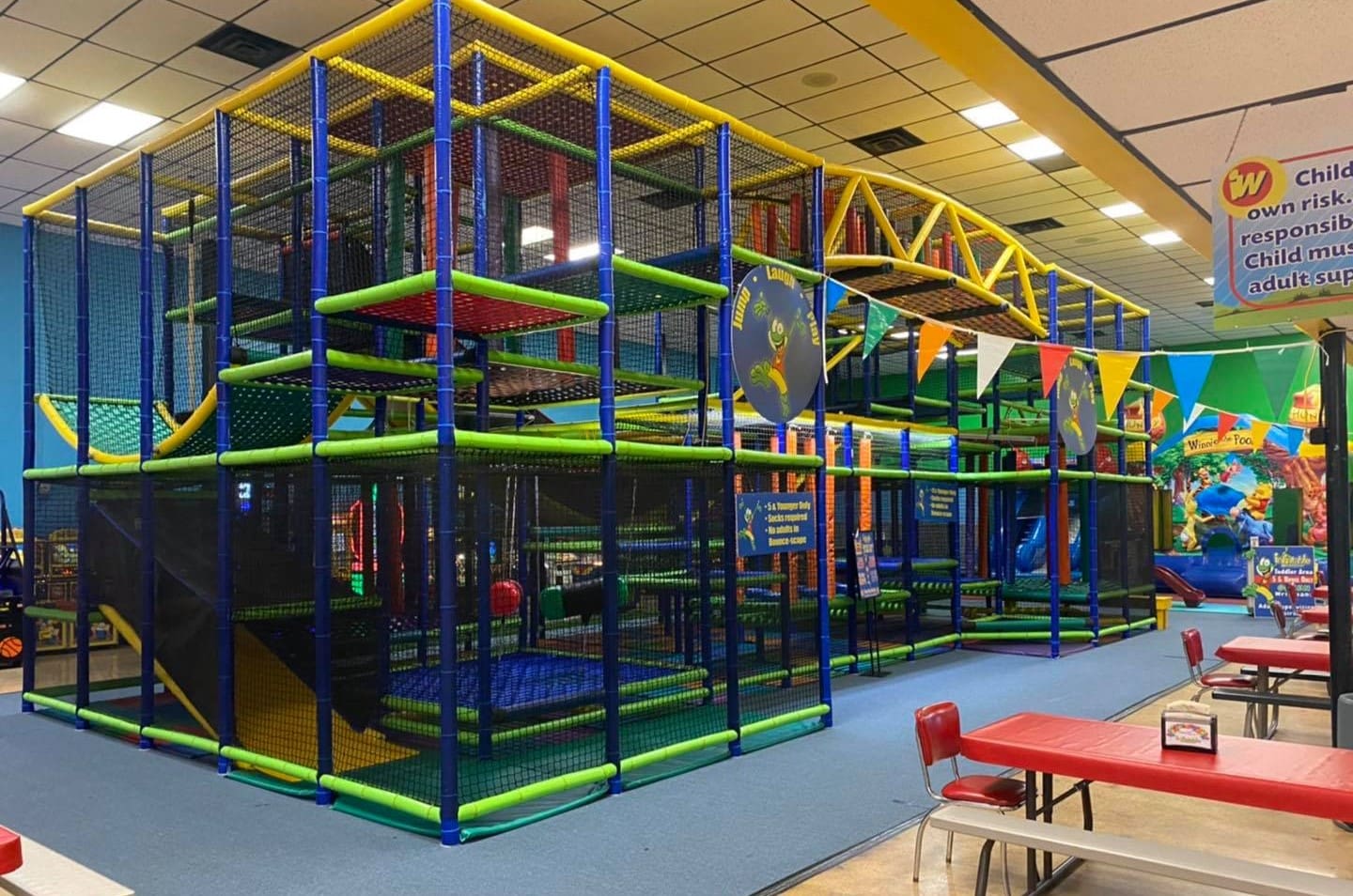

Garden Essentials
Why Is Rolling Oaks Mall Play Area Empty
Modified: March 7, 2024
Discover why the play area at Rolling Oaks Mall garden is empty and learn the reasons behind its lack of activity.
(Many of the links in this article redirect to a specific reviewed product. Your purchase of these products through affiliate links helps to generate commission for Storables.com, at no extra cost. Learn more)
Introduction
Welcome to Rolling Oaks Mall, located in the heart of a vibrant community. With its diverse range of stores, restaurants, and entertainment options, the mall has long been a go-to destination for local residents and visitors alike. However, in recent times, there is a noticeable change in one particular area of the mall – the once bustling play area now sits empty and neglected. This article aims to delve into the reasons behind the empty play area and explore potential solutions.
The play area at Rolling Oaks Mall used to be a bustling hub of laughter and excitement. Children would eagerly run towards the colorful play structures, as parents relaxed nearby, enjoying a momentary respite. It provided a much-needed respite, a place for families to gather and create lasting memories. However, lately, one can’t help but notice the contrast – an eerie silence hangs in the air, with no sounds of children savoring the joy of play.
So, why is the once-popular play area now empty and abandoned?
Key Takeaways:
- Rolling Oaks Mall can revitalize its empty play area by increasing advertising efforts, offering unique experiences, and collaborating with local businesses. This will attract families, boost tenant success, and strengthen the mall’s competitive edge.
- Implementing safety measures and adapting to the COVID-19 pandemic is crucial to ensure a safe and engaging play area. Revitalizing the play area will create a positive experience for visitors, spur economic growth, and foster community engagement.
Read more: What Mall Has A Kid Play Area
Background information about Rolling Oaks Mall and its play area
Rolling Oaks Mall, situated in a prime location, has been a cornerstone of the local community for years. With a wide variety of shops, dining options, and entertainment facilities, it has been a hub of activity and a favorite destination for families looking for a day of shopping and fun.
The mall’s play area was once a highlight for families and children. It featured a range of interactive play equipment, from climbing structures to slides and imaginative play spaces. The play area served as a haven for parents and children to unwind and enjoy quality time together. However, it seems that a shift has occurred, leading to its current state of emptiness.
Reasons for the Empty Play Area
There are several factors contributing to the decline in popularity and subsequent abandonment of the play area at Rolling Oaks Mall:
Lack of advertising and promotion
One crucial element is the lack of effective advertising and promotion for the play area. With no campaigns or marketing efforts to highlight the play area’s offerings, many visitors are unaware of its existence. Consequently, families may choose to go elsewhere for entertainment options, resulting in a decline of foot traffic to the play area.
Online shopping and e-commerce
In recent years, online shopping has seen a surge in popularity, offering convenience and a wider range of products. The rise of e-commerce has led many consumers to opt for the ease and comfort of shopping from home rather than visiting physical stores. This trend has impacted Rolling Oaks Mall, causing a decrease in overall foot traffic and subsequently affecting the play area’s visitor numbers.
Competition from other entertainment options
The rise of alternative entertainment options has also played a role in the declining popularity of the play area. Local amusement parks, indoor play centers, and other entertainment venues have emerged, providing families with a broader range of choices. The allure of these venues, often offering unique and immersive experiences, has diverted families’ attention away from the play area at Rolling Oaks Mall.
Safety concerns and restrictions due to COVID-19
The ongoing COVID-19 pandemic has had a significant impact on businesses and public spaces, including the play area at Rolling Oaks Mall. Concerns about safety and the need for social distancing have led to restrictions on gathering and the closure of many indoor play areas. These measures, while necessary for public health, have meant that the once-vibrant play area now remains empty, waiting for the situation to improve.
Understanding these reasons behind the empty play area at Rolling Oaks Mall is essential in finding viable solutions to revitalize this once-beloved space. The next section will explore the potential impact of the empty play area on the mall itself and the surrounding community.
Lack of advertising and promotion
One significant factor contributing to the decline in popularity of the play area at Rolling Oaks Mall is the lack of effective advertising and promotion. Without proper marketing efforts, many visitors are unaware of the play area’s offerings and its potential as a family-friendly destination.
Advertising plays a crucial role in attracting attention and creating awareness. It helps to inform the public about the play area’s features, such as the interactive play structures, comfortable seating areas for parents, and the safe and controlled environment it provides for children. Unfortunately, the play area has not received the same level of attention as other parts of the mall, leading to its relative obscurity.
Effective marketing strategies can include a combination of traditional and digital advertising methods. Traditional approaches, such as distributing flyers, posting signage within the mall, and running advertisements in local newspapers or magazines, can help reach the target audience. However, in today’s digital age, it is crucial to leverage online platforms to expand reach and engagement.
With the growing influence of social media, utilizing platforms like Facebook, Instagram, and Twitter can help create buzz and generate interest in the play area. Engaging with the community through posts, sharing photos and videos of children enjoying the play area, and promoting special events or promotions can help build excitement and encourage families to visit the mall. Collaborating with influential parent bloggers or family-oriented websites can also amplify the play area’s visibility and attract a wider audience.
Additionally, partnering with local schools or hosting special events like story time sessions, character appearances, or workshops can entice families to visit the mall and experience the play area. By creating memorable experiences and connecting with the community, the play area can re-establish its position as a go-to destination for families in the area.
To address the lack of advertising and promotion, Rolling Oaks Mall should consider investing in a comprehensive marketing strategy specifically tailored to highlight the play area’s features and benefits. By increasing awareness of the play area and its offerings, more families will be encouraged to visit, revive its vibrancy, and bring joy back to the once-empty space.
Online shopping and e-commerce
In recent years, online shopping has experienced significant growth and popularity, impacting the foot traffic at physical retail locations like Rolling Oaks Mall. The convenience and wide range of products available online have made it an appealing option for many consumers. This shift in consumer behavior towards online shopping has directly affected the play area at Rolling Oaks Mall.
One of the key advantages of online shopping is the ability to browse and purchase products from the comfort of one’s home. With just a few clicks, consumers can have items delivered right to their doorstep, eliminating the need to visit physical stores. This convenience factor has led to a decrease in foot traffic at brick-and-mortar establishments like the mall, resulting in fewer visitors to the play area.
Furthermore, e-commerce platforms offer a vast selection of toys, games, and other entertainment options for children. With online stores catering specifically to children’s products and offering competitive prices and quick delivery, parents are presented with a convenient alternative to visiting the play area at the mall. The appeal of having a range of options available at their fingertips, without the need to travel, has drawn many families away from physically visiting the mall and its play area.
To counter the impact of online shopping, Rolling Oaks Mall could incorporate e-commerce opportunities within its own website. By creating an online store that offers unique and exclusive products related to the play area, the mall can provide an additional shopping experience for families. This can include merchandise, special play equipment, or even booking tickets or passes for play sessions. By combining the convenience of online shopping with the attraction of physical play, the mall can create a seamless experience that entices visitors to explore the play area in person.
In addition, hosting virtual events or interactive experiences related to the play area can help bridge the gap between online shopping and physical visits. This can include live-streamed storytime sessions, virtual tours of the play area, or interactive games and contests through social media channels. By embracing the digital space and staying connected with visitors even when they are not physically present, Rolling Oaks Mall can continue to engage with families and encourage them to include a visit to the play area as part of their overall shopping experience.
While online shopping has undoubtedly impacted the foot traffic at traditional retail spaces, Rolling Oaks Mall can leverage its physical presence and unique offerings to create a seamless blend of online and offline experiences. By adapting to the changing consumer landscape and integrating e-commerce elements, the mall can attract visitors back to its play area and reignite the joy and magic it once held.
Read more: Capital Mall Play Area: What It’s Made Of
Competition from other entertainment options
Rolling Oaks Mall’s play area faces fierce competition from a plethora of alternative entertainment options in the local area. The emergence of new and exciting attractions has diverted families’ attention away from traditional mall play areas, resulting in a decline in visitors.
Amusement parks, indoor play centers, and other family entertainment venues have been quick to capitalize on the demand for unique and immersive experiences. These venues often offer a wide variety of attractions, including thrilling rides, interactive exhibits, and themed play areas, providing families with a comprehensive entertainment package.
Compared to the play area at Rolling Oaks Mall, which may have limited offerings, these alternative entertainment options offer a diverse range of activities designed to captivate different age groups. Whether it’s a multi-story indoor playground, laser tag arena, or trampoline park, these venues provide an all-encompassing experience that appeals to both children and adults.
Moreover, some of these alternative entertainment options have incorporated popular characters or licensed franchises into their attractions. This instant recognition and connection to well-loved characters heighten the appeal for families, significantly reducing the allure of a generic play area within the mall.
To overcome the competition, Rolling Oaks Mall can focus on differentiation and innovation. By introducing unique and engaging experiences within the play area, the mall can attract visitors who seek something beyond what the alternative entertainment venues offer. This can include themed play areas inspired by popular movies or TV shows, interactive digital installations, or even partnerships with well-known brands to create exclusive play experiences.
Furthermore, collaborating with local businesses and community organizations can help create a sense of exclusivity and community engagement. For example, organizing special events, workshops, or activities in partnership with local artists or educational institutions can provide families with a compelling reason to choose the mall’s play area over other options. By maintaining a dynamic and ever-evolving experience, Rolling Oaks Mall can position itself as a premier destination for family-friendly entertainment.
It is also crucial for Rolling Oaks Mall to continuously monitor the market and stay updated on the latest trends in family entertainment. By staying ahead of the curve and adapting to changing consumer preferences, the mall can remain relevant and competitive amidst the ever-expanding landscape of entertainment options.
While competition from alternative entertainment options is undeniable, Rolling Oaks Mall has the potential to capitalize on its existing infrastructure and strategic location. By embracing innovation, differentiation, and community collaboration, the play area can once again become a sought-after destination for families seeking an enjoyable and memorable experience.
Safety concerns and restrictions due to COVID-19
The ongoing COVID-19 pandemic has had a significant impact on businesses and public spaces worldwide, including Rolling Oaks Mall. The need for safety measures and social distancing has resulted in restrictions on gathering and the closure of many indoor play areas, including the play area at the mall.
Given the nature of the play area, where children interact closely with each other and frequently touch the play equipment, it remains a challenge to ensure a safe and sanitized environment during a pandemic. The health and well-being of visitors and staff are of utmost importance, and adhering to public health guidelines is crucial to mitigate the spread of the virus.
The impact on Rolling Oaks Mall has been profound. With the closure of the play area, there has been a considerable decrease in foot traffic within the mall itself. Families, who would typically spend extended periods at the mall, exploring stores and taking breaks in the play area, have now limited their visits due to the absence of this family-friendly space.
The decline in foot traffic has had a cascading effect on other businesses within the mall. Stores adjacent to the play area have experienced decreased customer flow, resulting in reduced sales and revenue. The absence of families spending time at the mall has also impacted food and beverage establishments, as parents and children would often take breaks and have meals together while visiting the play area.
Additionally, the empty play area creates a sense of desolation and disinterest among potential visitors. As people walk past the vacant space, devoid of laughter and activity, it signals a lack of vibrancy and may deter families from choosing the mall as their destination for entertainment.
While the impact of COVID-19 on the play area and Rolling Oaks Mall as a whole is undeniable, it is essential to prioritize safety and adhere to the necessary precautions. Implementing rigorous cleaning and sanitization protocols, providing hand sanitizing stations, and promoting social distancing within the play area can help create a safer environment for visitors.
Moreover, Rolling Oaks Mall can explore innovative initiatives to adapt to the current situation. This can include offering virtual play experiences or hosting limited capacity play sessions with pre-booking options to maintain crowd control. By addressing safety concerns and finding creative solutions, the mall can gradually reintroduce the joy and excitement of the play area, while prioritizing the well-being of visitors and staff.
As the situation evolves and restrictions are eased, it is crucial for Rolling Oaks Mall to stay updated with local health guidelines and adjust operations accordingly. By being proactive and responsive to the needs and safety concerns of the community, the mall can regain the trust and interest of families, restoring the play area as a central hub of activity and enjoyment.
Decreased foot traffic
The empty play area at Rolling Oaks Mall is not only a visual representation of its decline but also a reflection of the decreased foot traffic within the mall itself. The absence of a bustling and vibrant play area has significantly impacted the overall visitor numbers, resulting in a decrease in foot traffic throughout the mall.
Previously, the play area acted as a magnet, attracting families and children to the mall. Parents would bring their children specifically to enjoy the play area while also exploring the various shops and dining options available. This steady stream of families not only brought life and energy to the mall but also contributed to increased sales and revenue for the mall’s tenants.
However, with the play area now empty, families have fewer incentives to visit the mall. The lack of a dedicated space for children to play and engage in interactive activities has caused many families to seek alternative entertainment options elsewhere. As a result, foot traffic has declined, impacting not only the mall’s play area but also the other businesses operating within the mall.
The decrease in foot traffic can have a domino effect on the mall’s tenants and employees. With fewer visitors, stores experience reduced sales, leading to a decline in revenue. This can create financial strain for the tenants, affecting their ability to sustain their businesses and potentially leading to closures or downsizing. As a consequence, employees may face job insecurity or even the loss of their employment.
Moreover, decreased foot traffic affects the overall atmosphere and ambiance of the mall. The mall becomes less lively and engaging, potentially dissuading potential visitors from choosing Rolling Oaks Mall as their destination for shopping and leisure activities. The sight of an empty play area can give the impression of a lackluster and unappealing environment, further deterring families from choosing the mall as their preferred shopping destination.
To address the issue of decreased foot traffic, Rolling Oaks Mall must focus on revitalizing the overall visitor experience. This can involve improving the mall’s aesthetics, creating inviting and comfortable seating areas, and introducing interactive elements throughout the mall. By enhancing the ambiance and offering a more engaging and enjoyable environment, the mall can attract visitors and encourage longer stays.
Additionally, organizing special events, promotions, and activities that cater to families can help draw visitors back to the mall. Collaborating with local businesses and community organizations to host events such as seasonal festivals, art exhibits, or live performances can create a sense of excitement and community engagement. These initiatives can help increase foot traffic and re-establish Rolling Oaks Mall as a premier destination for shopping, dining, and entertainment.
By understanding the impact of decreased foot traffic and taking strategic steps to address this issue, Rolling Oaks Mall can successfully reinvigorate its visitor numbers and breathe new life into the once-thriving play area.
Decline in revenue
The empty play area at Rolling Oaks Mall has had a significant impact on the mall’s revenue. The decrease in foot traffic and the absence of a vibrant play area have resulted in a decline in sales and revenue for both the mall and its tenants.
With fewer visitors coming to the mall, the businesses within the mall experience reduced customer flow. Stores that once relied on the foot traffic generated by the play area and families visiting the mall now struggle to attract customers. This decline in customer traffic directly translates to a decline in sales for the mall’s tenants, impacting their overall revenue and financial stability.
As sales decline, tenants may find it challenging to cover their operating costs, such as rent, utilities, and employee wages. This financial strain can lead to difficult decisions for business owners, such as reducing working hours, cutting staff, or even closing their operations. The decline in revenue not only affects the businesses within the mall but also has a broader economic impact on the local community, potentially resulting in job losses and a decrease in economic activity.
Furthermore, the decline in revenue impacts the overall financial health of Rolling Oaks Mall itself. The mall relies on the rent and lease payments from its tenants to cover operational expenses and maintain the property. When tenant revenue decreases, it becomes more challenging for the mall to meet its financial obligations, such as maintenance costs, marketing initiatives, and property improvements.
Additionally, the decline in revenue affects the mall’s ability to attract new tenants. Businesses considering opening a store in the mall may hesitate to do so if they perceive a lack of customer traffic and declining sales. This can result in vacancies within the mall, further impacting its revenue potential.
To mitigate the decline in revenue, Rolling Oaks Mall must take proactive steps to revitalize its offerings and attract visitors. This can include investing in targeted marketing and advertising campaigns to promote the mall’s unique selling points, such as its diverse range of stores, dining options, and potential revitalization of the play area.
The mall can also explore strategic partnerships and collaborations with local businesses and community organizations to host special events and promotions. These initiatives can help generate buzz and attract visitors to the mall, increasing sales and revenue for tenants.
Furthermore, the mall can consider offering incentives for tenants, such as rent reductions or flexible leasing terms, to support them during this challenging period. Supporting the businesses within the mall not only helps them recover but also contributes to the overall economic vitality of the community.
By addressing the decline in revenue, Rolling Oaks Mall can lay the groundwork for a sustainable future. With strategic planning, innovative initiatives, and a commitment to revitalization, the mall can attract customers, increase sales, and regain its position as a thriving shopping destination.
Potential consequences for tenants and employees
The empty play area at Rolling Oaks Mall not only impacts the mall itself but also has significant consequences for its tenants and employees. The decline in foot traffic and revenue can have several implications for those reliant on the success of the mall.
Consequences for tenants:
1. Financial strain: The decrease in sales and revenue can put a severe strain on the financial health of the mall’s tenants. With less foot traffic and a decline in customer spending, businesses may struggle to cover their operational costs, such as rent, utilities, and employee wages.
2. Job insecurity: As businesses face financial challenges, employee layoffs or reduced working hours may be necessary to cut costs. This not only affects the livelihood of individual employees but also creates a sense of job insecurity among the remaining staff.
3. Reduced growth opportunities: Declining revenue can hinder the ability of tenants to invest in growth strategies or expand their operations. This lack of growth opportunities can impede the long-term viability and competitiveness of the businesses within the mall.
Consequences for employees:
1. Job losses: As businesses within the mall struggle to generate sufficient revenue, employee layoffs or store closures may become a reality. This can lead to job losses, leaving employees in a precarious position and potentially impacting their financial stability.
2. Decreased work hours: To cope with the decline in revenue, businesses may reduce employee working hours, resulting in reduced income for employees. This can create financial difficulties for individuals and their families.
3. Limited career growth: In an environment where businesses are facing challenges, opportunities for career growth and advancement may be limited. This can impact employee morale and job satisfaction, leading to a decline in long-term employee retention and engagement.
Potential Solutions
To address the consequences faced by tenants and employees, Rolling Oaks Mall needs to explore potential solutions that can revitalize the mall and create a more sustainable future:
1. Enhanced marketing and advertising: Implement targeted marketing campaigns to promote the mall, its unique offerings, and any upcoming events or promotions. Increase visibility through traditional advertising channels and utilize digital platforms to reach a wider audience.
2. Collaboration with local businesses and community organizations: Forge partnerships to host events, workshops, or special programs that attract visitors to the mall. Collaborating with local artists, schools, or charitable organizations can create unique and engaging experiences for visitors while fostering community engagement.
3. Improvement of the play area: Revitalize the play area with new and innovative features, incorporating interactive elements that provide a differentiated experience. This can help reestablish the play area as a primary attraction, increasing foot traffic and benefiting the mall’s tenants.
4. Flexible leasing terms: Offer flexible leasing arrangements or financial incentives to support tenants during challenging times. This can include rent reductions, temporary lease extensions, or addressing specific concerns faced by individual businesses.
5. Investment in employee development: Provide training and development opportunities to employees, enabling them to enhance their skills and adapt to the changing retail landscape. This investment can foster employee loyalty, improve job satisfaction, and contribute to long-term retention.
6. COVID-19 safety measures: Implement and consistently adhere to strict safety protocols to ensure the well-being of employees, tenants, and visitors. This includes regular sanitization, enforcing social distancing, and providing necessary protective gear.
By implementing these potential solutions, Rolling Oaks Mall can mitigate the consequences faced by tenants and employees. Revitalizing the mall’s appeal, attracting visitors, and fostering a supportive environment can foster the growth and prosperity of businesses within the mall and create a positive impact for all stakeholders involved.
Check the mall’s website or social media for any announcements about the play area’s closure or limited hours. It could also be helpful to call the mall’s customer service for more information.
Increased marketing and advertising efforts
One potential solution to revitalize the play area at Rolling Oaks Mall is to focus on increased marketing and advertising efforts. By implementing targeted campaigns, the mall can enhance its visibility, attract visitors, and create a resurgence of interest in the play area.
1. Comprehensive marketing strategy: Develop a comprehensive marketing strategy specifically tailored to highlight the play area and its unique offerings. This includes identifying the target audience, understanding their preferences and needs, and creating compelling messages that resonate with families seeking a fun and safe environment for their children.
2. Traditional advertising: Utilize traditional advertising channels such as television, radio, and local print media to reach the target audience. Advertisements can highlight the play area’s features, safety measures, and any special promotions or events taking place. Signage within the mall and along nearby roads can also help in capturing the attention of passing motorists.
3. Digital marketing: Leverage the power of digital platforms to reach a wider audience. Create a visually appealing website or landing page dedicated to the play area, providing details about its features, operating hours, and safety protocols. Utilize search engine optimization (SEO) techniques to improve online visibility and ensure the website ranks higher in search engine results.
4. Social media engagement: Build a strong social media presence for Rolling Oaks Mall, focusing on platforms such as Facebook, Instagram, and Twitter. Regularly post engaging content, including photos, videos, and testimonials from families who have enjoyed the play area. Encourage users to like, share, and comment on posts to increase visibility and extend the mall’s reach to a wider audience.
5. Influencer partnerships: Collaborate with local parenting influencers, bloggers, and content creators who have a significant following in the target audience. Invite them to experience the play area and share their thoughts and experiences on their platforms. Their influence and credibility can help generate buzz and attract new visitors to the mall.
6. Email marketing: Build a database of customers who have shown interest in the play area or the mall as a whole. Send out regular newsletters or targeted email campaigns with updates, promotions, or special events related to the play area. Personalized and relevant communications can help nurture customer relationships and keep the mall top of mind for families.
7. Collaboration with local schools and organizations: Partner with local schools and community organizations to promote the play area. Offer special discounts or exclusive access to school groups, organize fundraisers in collaboration with non-profit organizations, or host educational workshops for children. These collaborations not only enhance visibility but also demonstrate the mall’s commitment to the local community.
Increasing marketing and advertising efforts can create awareness and excitement around the play area at Rolling Oaks Mall. By utilizing a combination of traditional and digital strategies, the mall can effectively reach the target audience and entice families to visit. Through consistent and engaging communication, the play area can once again become a vibrant hub of activity, attracting visitors and revitalizing the overall mall experience.
Offering unique and engaging experiences in the play area
One effective solution to revitalize the play area at Rolling Oaks Mall is to focus on offering unique and engaging experiences. By providing exciting and memorable activities, the mall can create a compelling reason for families to choose the play area as their preferred destination for entertainment.
1. Themed play areas: Create themed play areas that immerse children in imaginative and interactive environments. Whether it’s a pirate ship, a jungle adventure, or a space exploration zone, themed play areas can spark children’s creativity and make their playtime more engaging. The incorporation of themed elements, such as decorations, props, and sound effects, can elevate the play area’s appeal and create a memorable experience.
2. Special events and activities: Organize special events and activities in the play area to attract families and encourage repeat visits. These can include character meet and greets, storytelling sessions, arts and crafts workshops, or interactive performances. By offering a variety of engaging programming, the play area becomes a hub of excitement, drawing families to the mall.
3. Partnerships with popular brands: Collaborate with popular brands or franchises to bring exclusive experiences to the play area. This can involve introducing characters, games, or elements from beloved children’s properties, creating a sense of anticipation and delight for young visitors. These partnerships not only enhance the play area’s appeal but also attract fans of the brand who may not have visited the mall previously.
4. Interactive technology: Incorporate interactive technology into the play area to offer a unique and modern experience. This can include interactive floor projections, augmented reality games, or touch-sensitive play equipment. By integrating technology, the play area becomes an innovative and dynamic space that captivates children and provides entertainment beyond traditional play structures.
5. Multi-sensory experiences: Engage children’s senses by incorporating multi-sensory elements into the play area. This can include interactive lighting, sound effects, or textured surfaces. By stimulating multiple senses, the play area becomes a more immersive and engaging environment, enhancing children’s enjoyment and making their visit a memorable one.
6. Inclusive play: Ensure the play area is inclusive and accessible to children of all abilities. Incorporate features such as wheelchair-accessible ramps, sensory play elements, or quiet areas for children with sensory sensitivities. By creating an inclusive space, the play area can accommodate a wider range of children and provide a positive and welcoming experience for all visitors.
7. Continuous innovation: Regularly evaluate and refresh the play area with new experiences and features. This can involve introducing seasonal themes, rotating play equipment, or incorporating trending elements from popular culture. By keeping the play area fresh and exciting, families will have a reason to visit frequently and explore what’s new.
By offering unique and engaging experiences in the play area, Rolling Oaks Mall can cultivate a reputation as a premier destination for family entertainment. Through creativity, innovation, and a commitment to providing a memorable experience, the play area can recapture its vibrancy and attract families back to the mall, creating a positive impact for both visitors and the overall mall ecosystem.
Collaborating with local businesses and community organizations
One effective solution to revitalize the play area at Rolling Oaks Mall is to collaborate with local businesses and community organizations. By forming strategic partnerships, the mall can leverage the resources, expertise, and community connections of these entities to enhance the play area’s offerings and attract a wider audience.
1. Joint promotions: Collaborate with local businesses to create joint promotions that offer incentives for families to visit the play area. This can include discounts or special offers for dining at nearby restaurants, shopping at specific stores, or accessing services within the mall. The cross-promotion encourages families to explore all that the mall has to offer, increasing foot traffic and benefiting all participating businesses.
2. Sponsorship opportunities: Seek sponsorship opportunities from local businesses that align with the interests of families. This can involve partnering with companies that specialize in child-oriented products or services, such as toy stores, children’s clothing retailers, or education centers. By securing sponsorships, the play area can enhance its offerings, such as providing complimentary samples, hosting product demonstrations, or organizing educational workshops.
3. Collaborative events and activities: Organize collaborative events and activities with local businesses and community organizations. This can include hosting arts and crafts workshops, live performances, or educational sessions that are co-led by experts from relevant fields. By combining resources and expertise, these events become more engaging, attracting families and providing a well-rounded entertainment experience.
4. Supporting local artists and performers: Showcase the talent of local artists, performing groups, or entertainers within the play area. Regularly featuring live performances, such as music, theater, or interactive storytelling, can provide families with unique and memorable experiences. By supporting local artists, the mall fosters community engagement and enriches the cultural fabric of the play area.
5. Collaboration with schools and educational institutions: Partner with local schools and educational institutions to offer educational and enrichment programs within the play area. This can involve hosting science experiments, interactive workshops, or literacy-focused activities. By incorporating educational elements, the mall positions itself as a place for both entertainment and learning, attracting families who value educational experiences for their children.
6. Charitable initiatives: Collaborate with non-profit organizations or community groups on charitable initiatives within the play area. This can include fundraising events, donation drives, or supporting causes that resonate with families and the local community. By aligning with philanthropic efforts, the play area gains a positive reputation as a socially responsible space, attracting families who prioritize supporting causes they care about.
7. Promoting local products and businesses: Highlight and promote local products and businesses within the play area. This can involve creating dedicated spaces for local vendors to showcase their products or organizing pop-up markets where families can discover and purchase locally-made goods. Supporting local businesses strengthens the local economy and fosters a sense of community pride among visitors.
By collaborating with local businesses and community organizations, Rolling Oaks Mall can tap into the collective strengths of the community. These partnerships not only enhance the offerings of the play area but also create a vibrant and interconnected ecosystem that benefits all involved. The collaboration reinforces the mall’s position as a hub of local commerce and strengthens its appeal as a go-to destination for families seeking entertainment and community engagement.
Implementing safety measures to address concerns during COVID-19 pandemic
As the world continues to grapple with the COVID-19 pandemic, implementing safety measures is paramount to address concerns and ensure the well-being of visitors to the play area at Rolling Oaks Mall. By prioritizing safety and adhering to necessary precautions, the mall can instill confidence in families and create a safer environment for everyone.
1. Enhanced cleaning and sanitization: Implement rigorous cleaning protocols to maintain a clean and hygienic play area. Increase the frequency of sanitization for high-touch surfaces, play equipment, and seating areas. Provide hand sanitizing stations throughout the play area and prominently display reminders for visitors to sanitize their hands regularly.
2. Enforce social distancing: Implement measures to ensure social distancing is maintained within the play area. This can include rearranging play structures to allow for increased spacing between children, marking floor or seating areas to indicate safe distances, and controlling the number of visitors allowed into the play area at a given time.
3. Mandatory mask policies: Require all visitors above a certain age to wear masks while inside the play area. Display clear signage and communicate the mask policy to visitors in advance. This measure ensures a safer environment by reducing the risk of respiratory droplet transmission.
4. Temperature screenings and health checks: Conduct temperature screenings and health checks for both staff and visitors before entering the play area. Deploy thermal scanners or no-touch thermometers to identify anyone with a fever or COVID-19 symptoms. Visitors should be encouraged to stay home if they are unwell or have been in contact with someone with a confirmed case.
5. Communication and signage: Clearly communicate the safety measures implemented within the play area through signage, posters, and digital displays. Inform visitors about the precautions being taken and provide reminders about maintaining social distancing, proper hygiene practices, and mask usage. Regularly update this communication to reflect the latest guidelines and recommendations.
6. Staff training and protection: Train all staff members on the safety protocols and guidelines to ensure consistent implementation. Provide them with necessary personal protective equipment (PPE) such as masks, gloves, and face shields. Encourage staff members to follow proper hand hygiene and respiratory etiquette practices to protect themselves and visitors.
7. Regular monitoring and adaptability: Continuously monitor and assess the effectiveness of the implemented safety measures. Stay updated on local health guidelines and adjust operations accordingly. Remain flexible and adaptable to changing circumstances, including potential changes in restrictions or guidelines related to the pandemic.
By implementing these safety measures, Rolling Oaks Mall can address concerns surrounding the COVID-19 pandemic and create an environment that prioritizes the health and safety of visitors and staff. Providing a safe and secure play area ensures that families can confidently enjoy the experience while mitigating the risk of virus transmission.
Conclusion
The empty play area at Rolling Oaks Mall is a clear indication of the challenges it faces, but there are potential solutions to revitalize this space and attract visitors once again. Factors such as increased marketing efforts, offering unique and engaging experiences, collaborating with local businesses and community organizations, and implementing safety measures all play a crucial role in rejuvenating the play area.
By prioritizing advertising and promotion, the mall can effectively communicate the play area’s offerings and attract families back to enjoy a fun-filled experience. Offering unique and engaging experiences within the play area creates a sense of excitement and brings families back for repeat visits.
Collaborating with local businesses and community organizations strengthens the mall’s relationship with the surrounding community, fostering engagement and support. Implementing safety measures not only addresses concerns during the ongoing COVID-19 pandemic but also ensures the well-being of visitors and staff.
By carefully considering these potential solutions, Rolling Oaks Mall can reignite the joy, foot traffic, and revenue to the play area. The mall can once again become a thriving hub of family entertainment, benefiting not only the mall itself but also its tenants, employees, and the local community as a whole.
Summary of the factors contributing to the empty play area at Rolling Oaks Mall
The play area at Rolling Oaks Mall, which was once a vibrant and bustling space filled with laughter and joy, now sits empty and neglected. Several factors have contributed to its decline, leading to a decrease in visitors and foot traffic:
1. Lack of advertising and promotion: The play area has suffered from a lack of effective marketing and advertising. Insufficient efforts to highlight its offerings and create awareness have resulted in many visitors being unaware of its existence.
2. Online shopping and e-commerce: With the rise of online shopping and e-commerce, families now have the convenience of shopping from home, reducing their visits to physical retail locations like Rolling Oaks Mall. The ease of online shopping and the wider range of products available online have drawn customers away from brick-and-mortar establishments.
3. Competition from other entertainment options: Alternative entertainment options such as amusement parks, indoor play centers, and other family-oriented venues have emerged, offering a more diverse and immersive experience for families. These alternatives have diverted families’ attention away from the play area at the mall, creating competition for the mall’s offerings.
4. Safety concerns and restrictions due to COVID-19: The ongoing COVID-19 pandemic has had a significant impact on businesses and public spaces, including the play area at Rolling Oaks Mall. Concerns about safety and the need for social distancing have led to restrictions on gathering and the closure of many indoor play areas, making the play area inaccessible to families.
The empty play area has had several consequences, including a decline in foot traffic and revenue for the mall and its tenants. Reduced foot traffic has not only impacted the play area itself but also the overall atmosphere of the mall. Tenants have experienced a decrease in sales and revenue, potentially leading to financial strain and possible job losses. Employees may face job insecurity or reduced working hours due to the decrease in business activity.
To revitalize the play area, solutions can be implemented. These include increasing marketing and advertising efforts, offering unique and engaging experiences, collaborating with local businesses and community organizations, and implementing safety measures. By implementing these strategies, Rolling Oaks Mall can regain its position as a vibrant destination for families, attracting visitors back to the play area and revitalizing the entire mall ecosystem.
It is crucial for Rolling Oaks Mall to adapt and innovate in response to these challenges. By understanding the factors contributing to the decline of the play area and implementing effective solutions, the mall can create a renewed experience that draws families, increases foot traffic, and generates revenue for both the mall and its tenants.
Read more: What Does A Play Area Include
Importance of finding effective solutions to revitalize the play area and attract visitors
The play area at Rolling Oaks Mall is an integral component of the overall shopping experience it offers. As a destination for families seeking entertainment and quality time, revitalizing the play area and attracting visitors is of utmost importance. Here’s why finding effective solutions is crucial:
1. Strengthening the mall’s competitive edge: Retail spaces face stiff competition in today’s market, especially with the growth of online shopping and alternative entertainment options. Revitalizing the play area allows Rolling Oaks Mall to differentiate itself from competitors and create a unique selling point. It reinforces the mall’s status as a family-friendly destination, drawing visitors and increasing overall foot traffic.
2. Boosting tenant success: The success of the mall’s tenants is directly linked to the mall’s overall performance. When the play area attracts families and increases foot traffic, it benefits the adjacent stores and dining establishments. More visitors within the mall mean increased opportunities for sales and revenue for tenants. By revitalizing the play area, the mall can contribute to the success and sustainability of its tenants.
3. Generating revenue for the mall: The play area is not only an attraction on its own but also a catalyst for increased spending within the mall. Families tend to spend longer periods at the mall when they visit the play area, resulting in more opportunities for shopping, dining, and other activities. Increased visitor numbers translate to higher revenue from lease agreements, space rentals, and related services, strengthening the mall’s financial stability.
4. Fostering community engagement: The play area serves as a community gathering space, providing an avenue for families to connect, interact, and socialize. By revitalizing the play area, Rolling Oaks Mall can strengthen its bond with the local community. Collaborating with businesses, hosting community events, and supporting local organizations within the play area foster a sense of belonging and community engagement.
5. Creating a positive experience for visitors: A vibrant and engaging play area elevates the overall experience for visitors to the mall. Families are more likely to enjoy their time at the mall when they have access to a well-maintained, safe, and exciting play area. This positive experience can leave a lasting impression, encouraging families to return and become loyal customers, resulting in repeat visits and increased customer retention.
6. Spurring economic growth: Rolling Oaks Mall plays a vital role in the local economy, generating employment opportunities and contributing to the financial stability of the community. A revitalized play area attracts visitors from within and outside the community, leading to increased spending on local goods and services. This economic activity helps support job creation, tax revenues, and overall economic growth in the region.
Efforts to revitalize the play area at Rolling Oaks Mall and attract visitors are paramount to its long-term success and relevance. By investing in innovative solutions, focusing on the visitor experience, and fostering collaboration with local businesses and the community, the mall can create a thriving destination for families, enhance its competitiveness, and contribute to the overall economic and social well-being of the local community.
Frequently Asked Questions about Why Is Rolling Oaks Mall Play Area Empty
Was this page helpful?
At Storables.com, we guarantee accurate and reliable information. Our content, validated by Expert Board Contributors, is crafted following stringent Editorial Policies. We're committed to providing you with well-researched, expert-backed insights for all your informational needs.
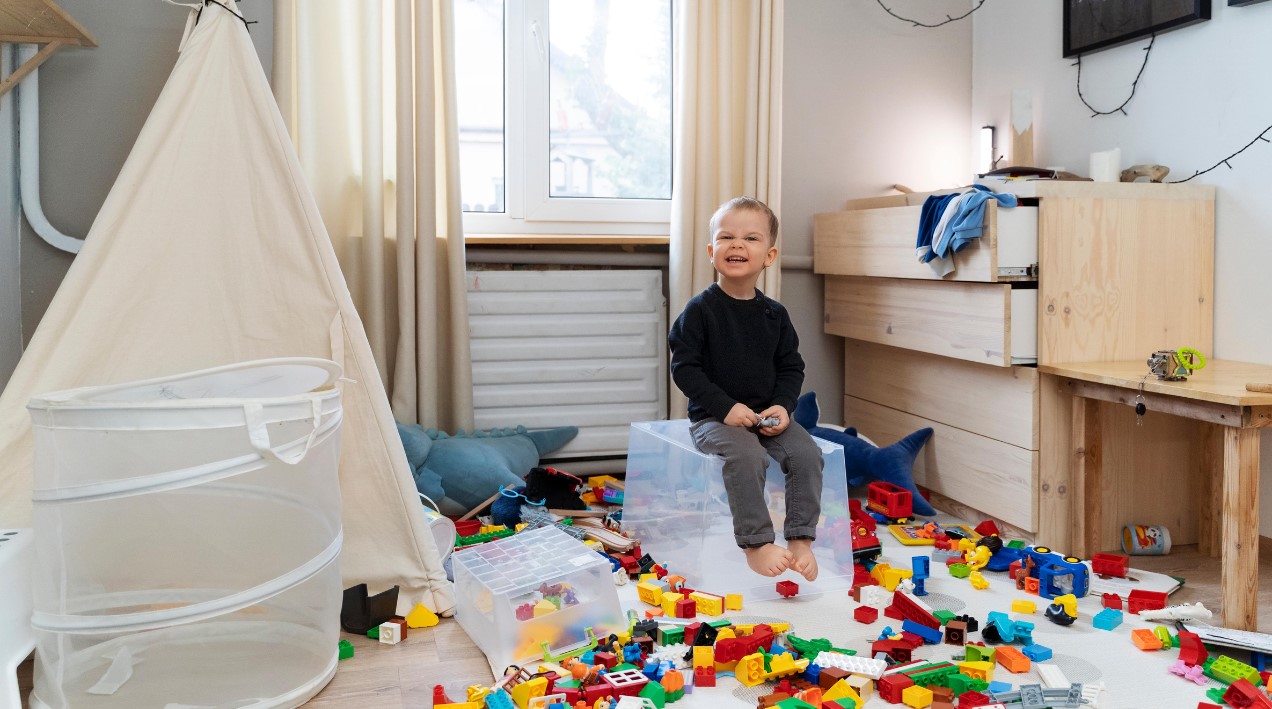

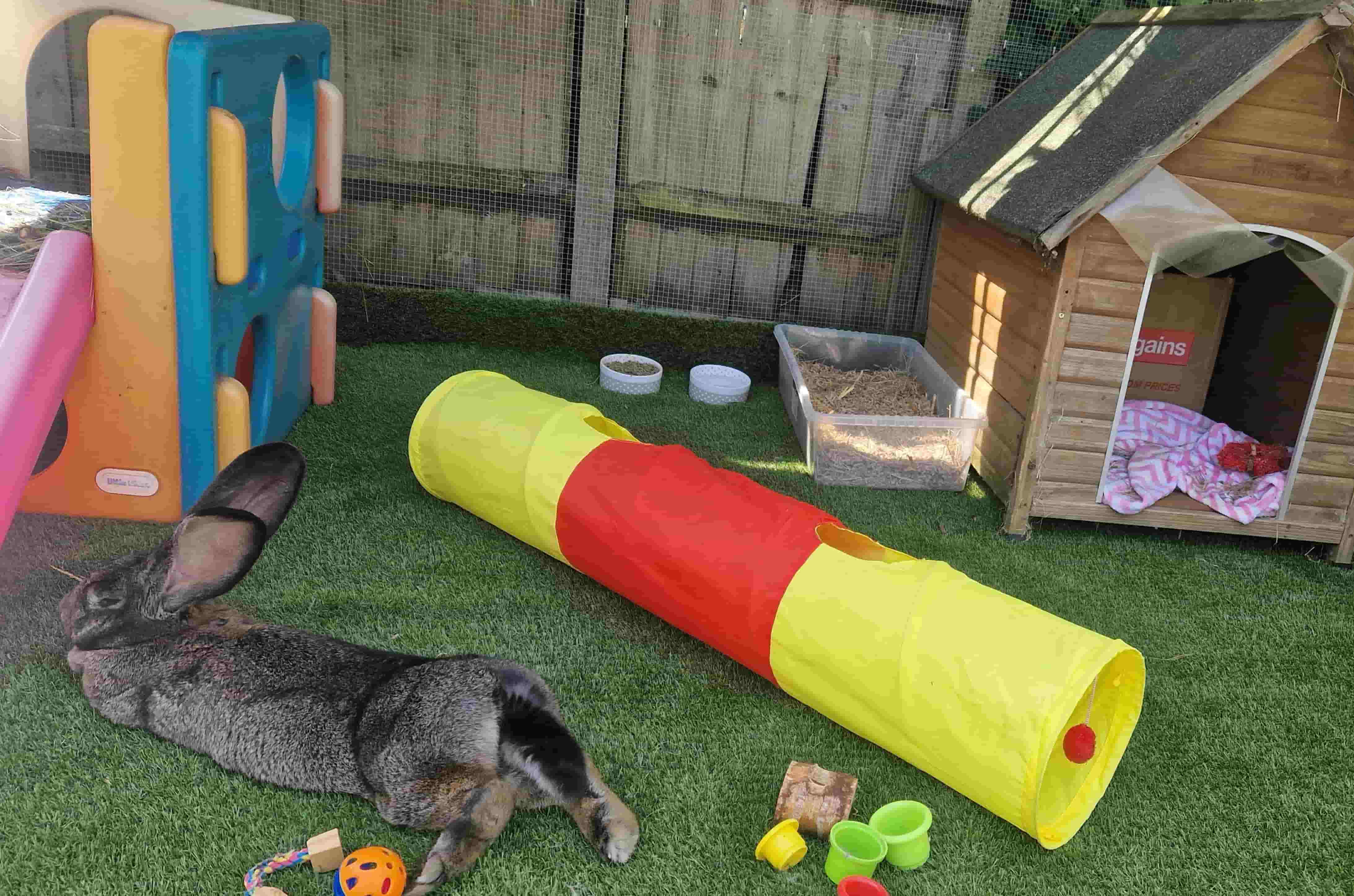
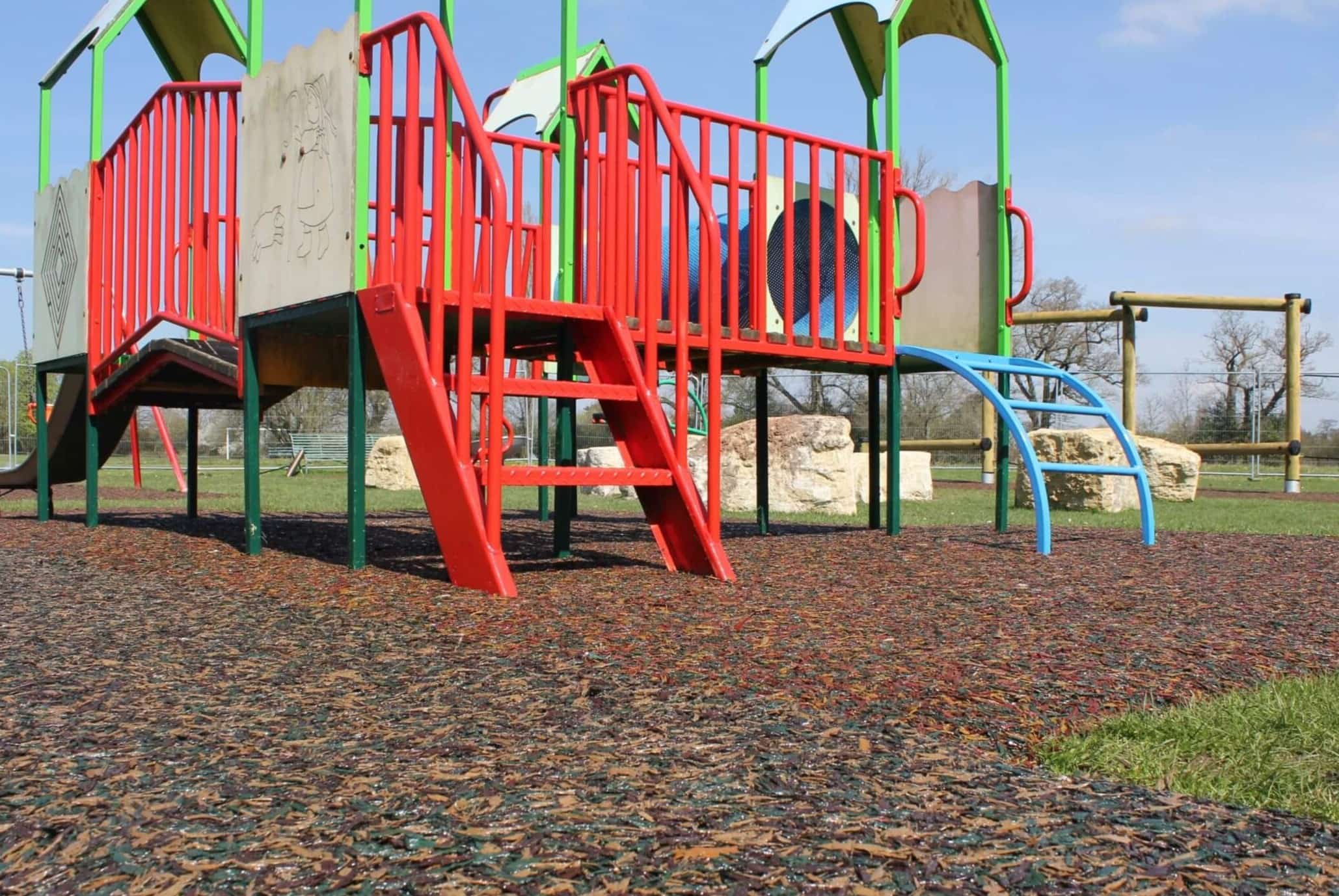

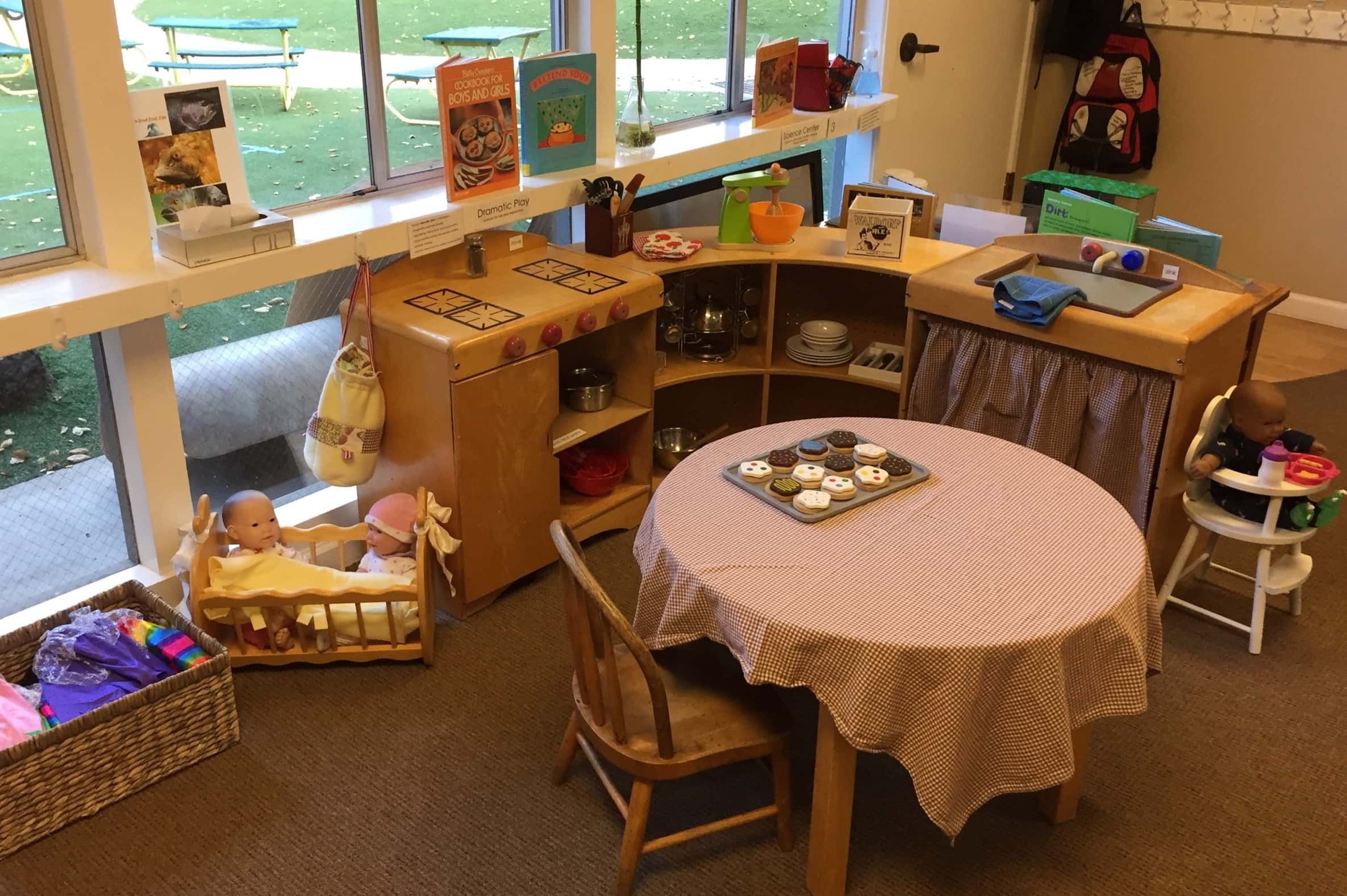
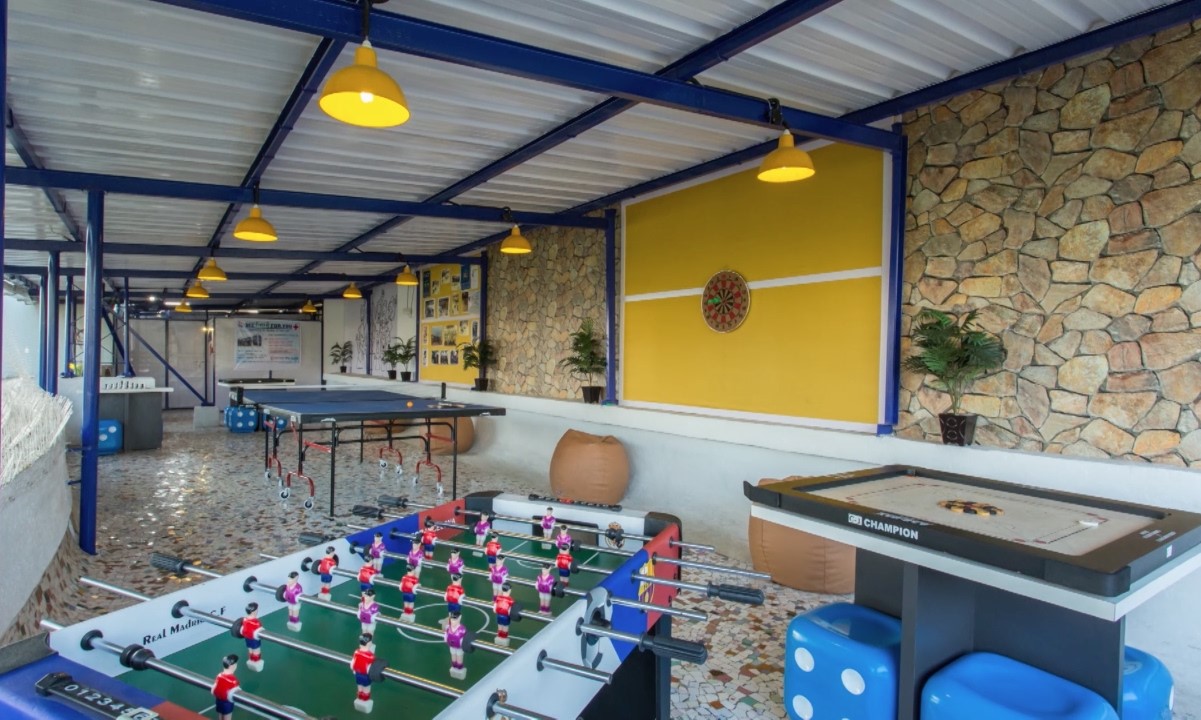
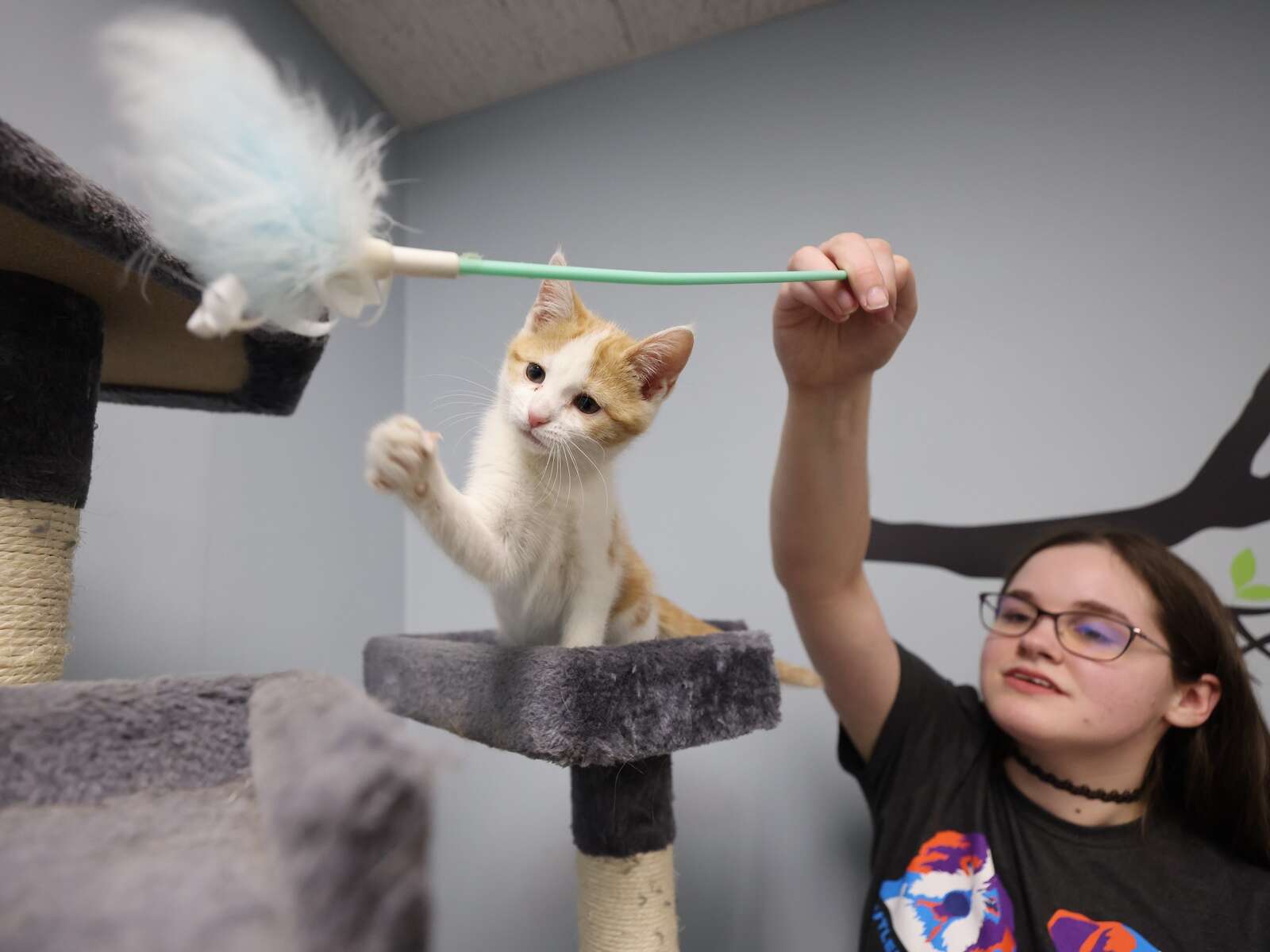

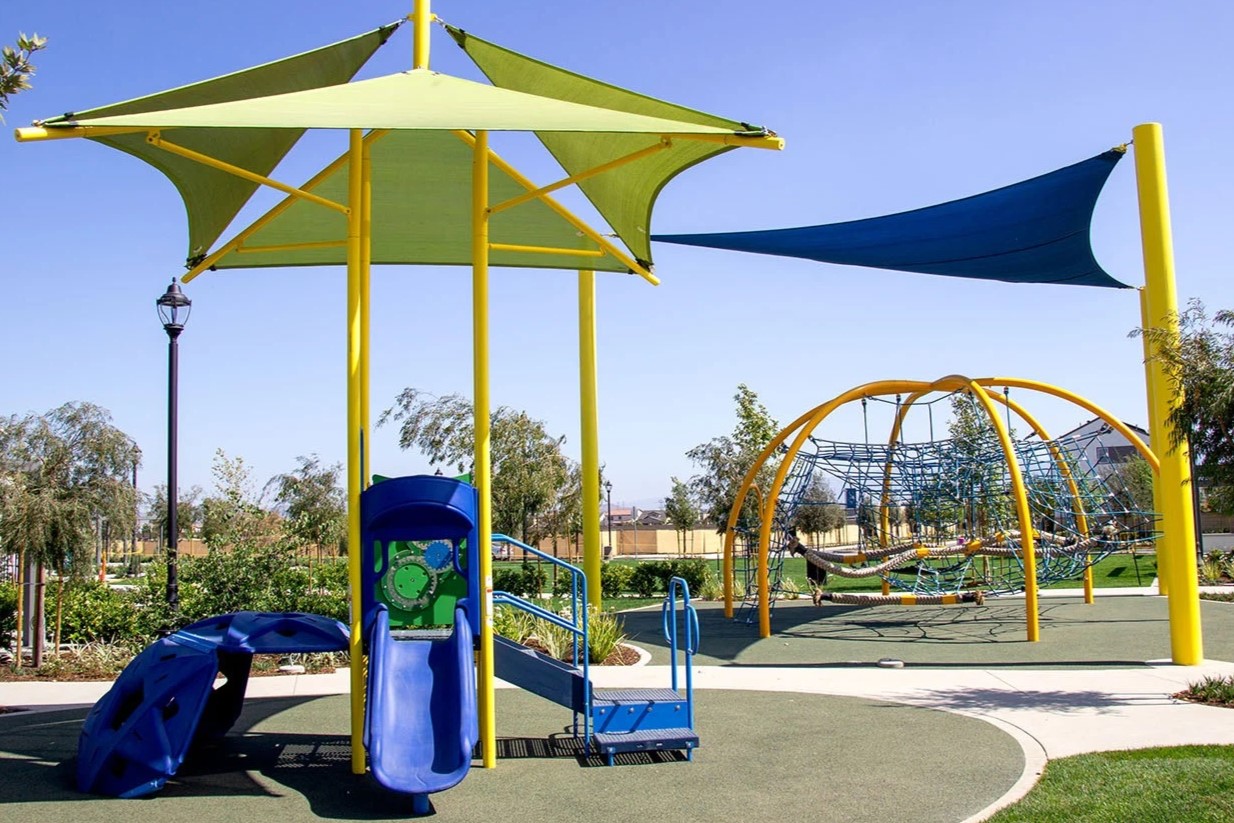

0 thoughts on “Why Is Rolling Oaks Mall Play Area Empty”